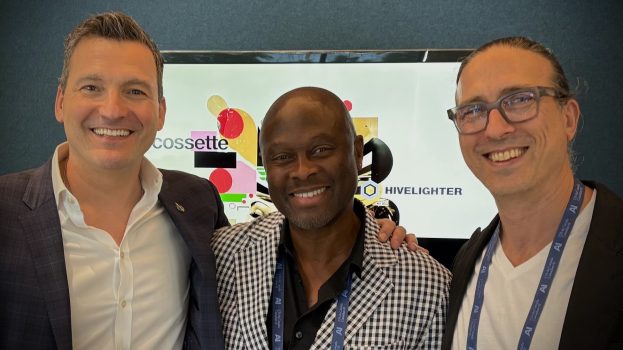
By John Bradley
The biggest thing I learned as a client was that you end up with the creative you deserve.
When watching an agency’s house reel, I would set myself the challenge of getting more out of the shop than 90% of the clients on the reel had done. Was the trick to stand back and unleash the creatives? Many in the agency world seemed to think so.
Account directors would constantly remind me that Pope Sixtus IV hadn’t pestered Michelangelo to paint that bit a brighter blue, nor had the pontiff insisted on Link copy-testing a few concepts for the pendentives with a randomly selected group of cardinals. However, that doesn’t mean Michelangelo worked without any constraints, the biggest being the Sistine Chapel roof itself. Those pendentives were an awful shape to fit scenes into, but they became some of the highlights of the final work.
Negatives had been turned into positives, which I decided was one of the secrets of getting into an agency’s top 10% of good work. It was done by convincing the creatives that my brand mandatories were a) mandatory and b) opportunities for some real creativity. A current favourite of mine is “It all starts with a Nescafé.” (The ad, by Publicis, can be seen on Nescafé Canada’s Facebook and YouTube pages.)
[iframe_youtube video=”AL0ZAiEgESQ”]
Talk about a creative desert – a brand older than Methuselah where everything that could be said has already been said 16 times. Oh, and we have this mandatory brand icon of, wait for it, a red coffee mug. It sets the standard of leveraging constraints to be a source of creativity, as the ad features nothing but red coffee mugs creating emotional connections. Brand identity and emotional resonance all in 30 watchable seconds – pure gold.
Aside from dullsville brand mandatories, the biggest constraint to creativity I’ve heard and still hear about from the agency side is Millward Brown’s Link copy-testing, which, an agency CEO told me recently, is now wheeled out as the go/no-go in an increasing number of pitches. Firstly, hats off to MB for creating an industry standard; it has come a long way from the days of my first job in Cadbury’s research department (Millward Brown’s first client). Secondly, shame on the agency world for moaning about the Link test rather than figuring out how to embrace it.
When I was reviewing agency reels, I would amuse the crowd by predicting, with startling accuracy, how each ad had performed with MB. I could do this circus trick because I had invested the time with MB to learn everything I could about the test methodology, databases, etc. So I knew what this thing looked for and valued. My advice is to do your homework, write work that will win the test, then use your silky charms to migrate the work to something you really believe in.
The third thing I learned was to know when to suspend my own misgivings and defer to the passion of the creatives. My Damascene moment came with some new scripts for Cadbury Creme Eggs, where the basic idea, within the ongoing campaign of “How Do You Eat Yours?”, was to show in animated form how each star sign would eat a Creme Egg (“Cancer, and I’m a shell man myself,” “Hi, I’m Leo. I eat the lion’s share,” etc.). So in true client style I listed my oh-so-sensible objections: each vignette would only appeal to one-twelfth of the target market, not campaignable, how will we get appetite appeal with claymation? Blah, blah, blah. Work rejected.
But the agency didn’t take this lying down – it went off to Wallace & Gromit filmmakers, Aardman Animations, paid for the shooting of one of the vignettes and a round of research, and came back with such belief and passion that I was sold. It was the most successful campaign of my career, which, incidentally, the creative director and founding partner of the agency proudly uploaded to YouTube 15 years later (search “Creme Egg star signs”) which shows how much he and his team believed in it. After that I was more concerned with sorting true passion from sell bullshit, than actually trying to evaluate the work.
So how’s the state of Canadian creativity? It’s as good as the state of its marketing community.
 John Bradley is a marketer and serial author of books including Cadbury’s Purple Reign: The Story Behind Chocolate’s Best-Loved Brand.
John Bradley is a marketer and serial author of books including Cadbury’s Purple Reign: The Story Behind Chocolate’s Best-Loved Brand.























